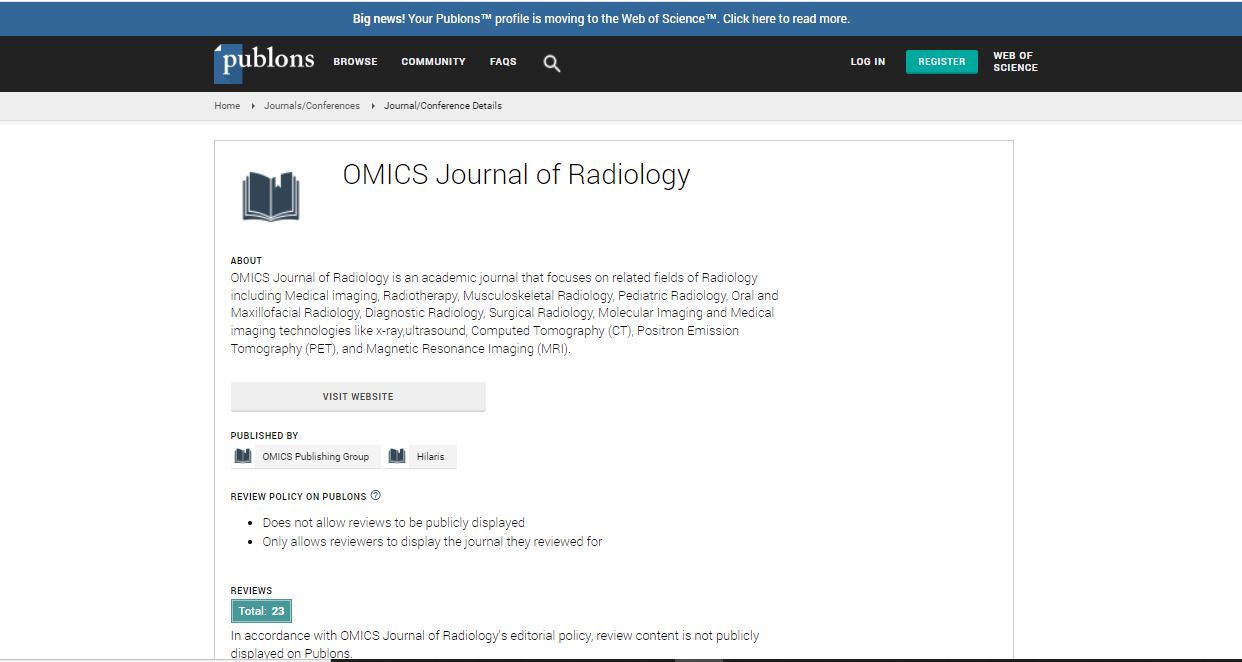Our Group organises 3000+ Global Conferenceseries Events every year across USA, Europe & Asia with support from 1000 more scientific Societies and Publishes 700+ Open Access Journals which contains over 50000 eminent personalities, reputed scientists as editorial board members.
Open Access Journals gaining more Readers and Citations
700 Journals and 15,000,000 Readers Each Journal is getting 25,000+ Readers
Google Scholar citation report
Citations : 551
Journal of Radiology received 551 citations as per Google Scholar report
Journal of Radiology peer review process verified at publons
Indexed In
- Index Copernicus
- Google Scholar
- Open J Gate
- Genamics JournalSeek
- ResearchBible
- Electronic Journals Library
- RefSeek
- Hamdard University
- EBSCO A-Z
- OCLC- WorldCat
- SWB online catalog
- Virtual Library of Biology (vifabio)
- Publons
- Geneva Foundation for Medical Education and Research
- ICMJE
Useful Links
Share This Page
Surveillance for gallbladder polyps at a NHS district general hospital: A retrospective analysis
6th Global Meeting on Oncology and Radiology
Sakshi Rajain
Chesterfield Royal Hospital, United Kingdom
ScientificTracks Abstracts: OMICS J Radio
Abstract
Background: Gallbladder polyps are encountered in 5% of ultrasound scans and continue to remain a dilemma in terms of management. Very few polyps progress to cancer. However, most cancerous polyps are usually found at an advanced stage. It is therefore important to identify the premalignant polyps. There is a lack of national consensus in UK for surveillance of gallbladder polyps. Many trusts in the UK either adopt the European guidelines or formulate local protocols. We aim to present our findings based on our local surveillance policy existent during the study period with a view to recommending new guidelines. Methods: A search from our radiology database being coded to gallbladder polyp identified patients. We identified 431 patients from 2017- 2019 who had a total of 1014 scans. The data was collected from local hospital IT databases in terms of variables such as number of scans, polyp size, number of polyps, progression to surgery or discharge from surveillance and histology. The data was analysed on excel platform. Results: Patient demographics revealed an incidence of 54% in females (males 46%) with an average age of 59.7 years. Pain was the dominant symptom prompting the first scan (48%). An average of 2.3 scans was performed per patient. 45% of the polyps were less than 5 mm. Overall, 22% polyps demonstrated interval growth. Only 15% of polyps less than 5 mm demonstrated interval growth and none required cholecystectomy. 6% patients proceeded to surgery mainly for symptoms (46%) compared to polyp progression (1.5%). No malignancy was identified in this study.43% of patients with polyp diagnosis in primary care had no identified surveillance plan. Conclusion: Our study demonstrates a low incidence of polyp progression. We would recommend stopping annual surveillance after 2 years from the index scan for multiple small (<5 mm) polyps with little or no progression but continue with annual surveillance for polyps greater than 5 mm. We would recommend reserving cholecystectomy for symptomatic polyps and polyps greater than 10 mm. There is wide variation in surveillance practice particularly in primary care. We would recommend sharing the guideline widely with primary care for optimal surveillance.Biography
Sakshi Rajain is working in Ash court residence Chesterfield royal hospital, United Kingdom.

 Spanish
Spanish  Chinese
Chinese  Russian
Russian  German
German  French
French  Japanese
Japanese  Portuguese
Portuguese  Hindi
Hindi 
